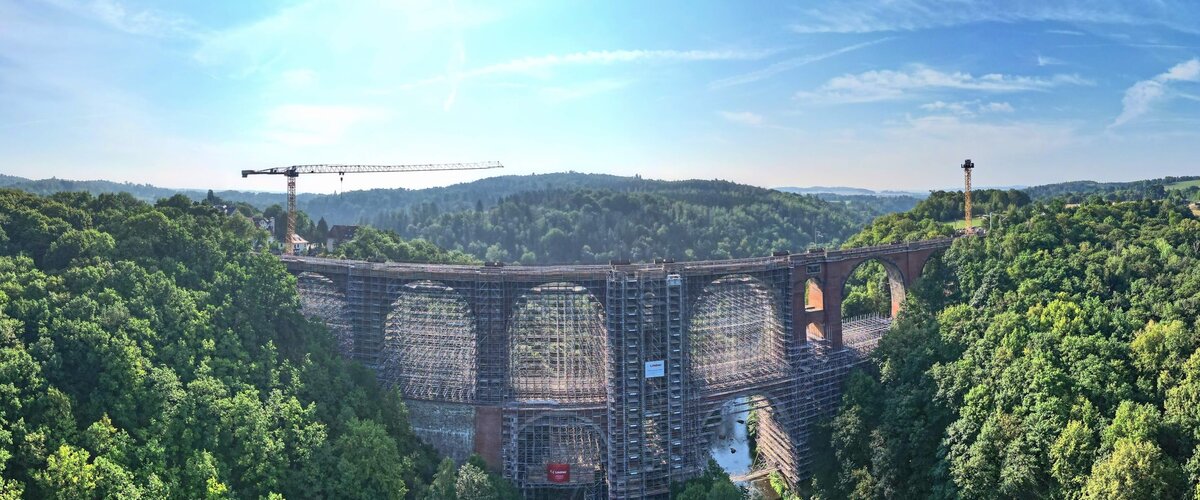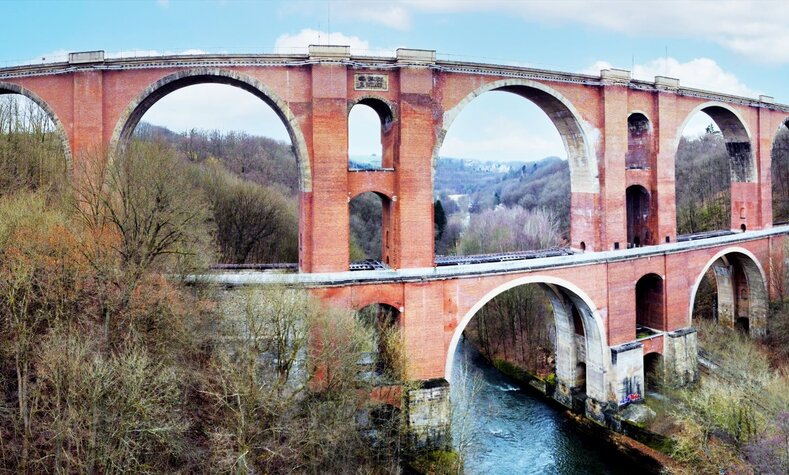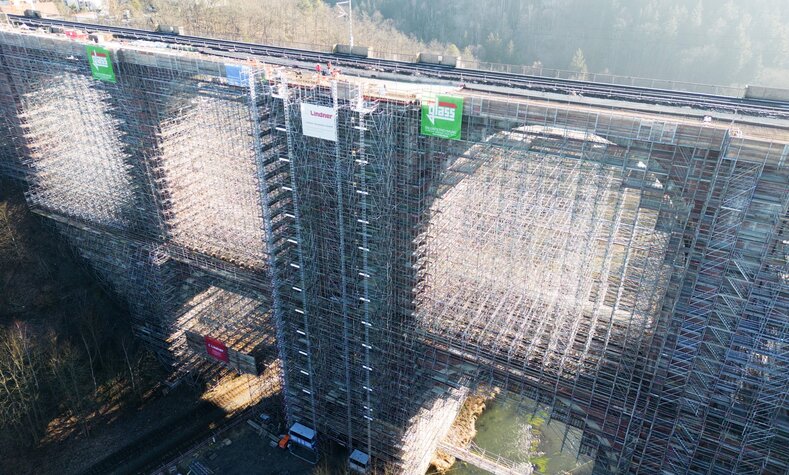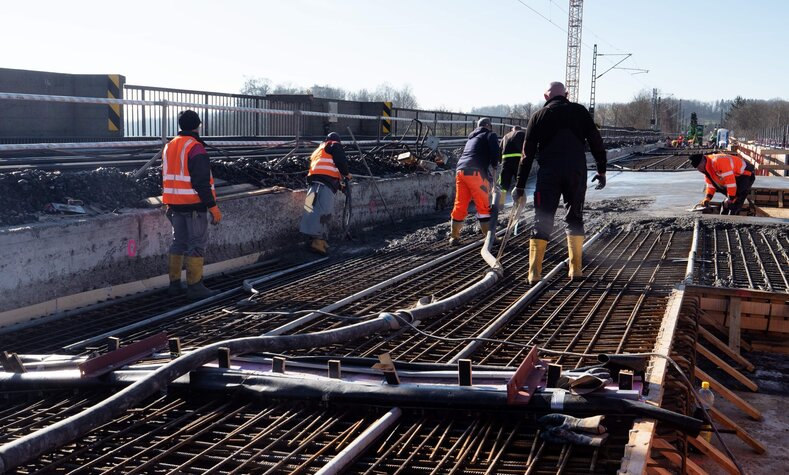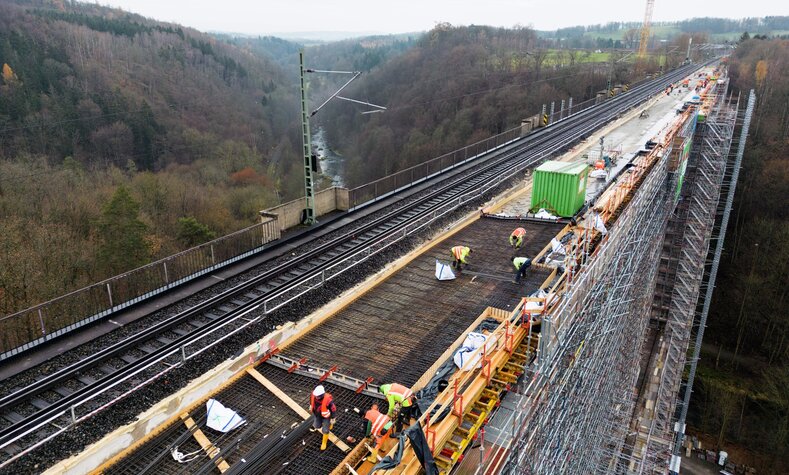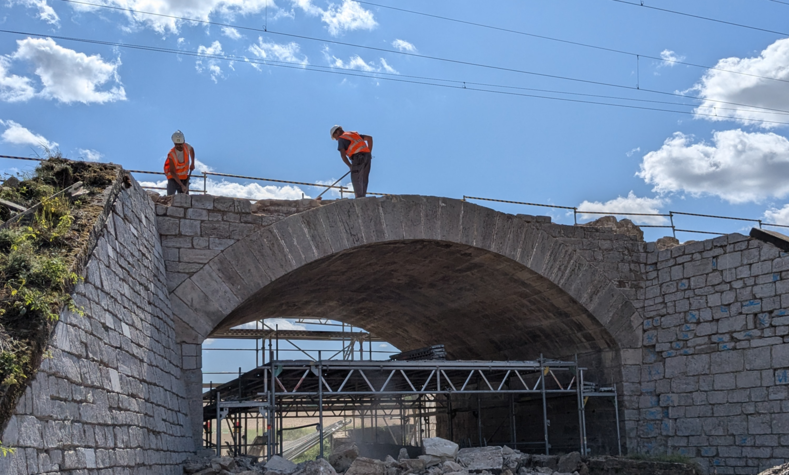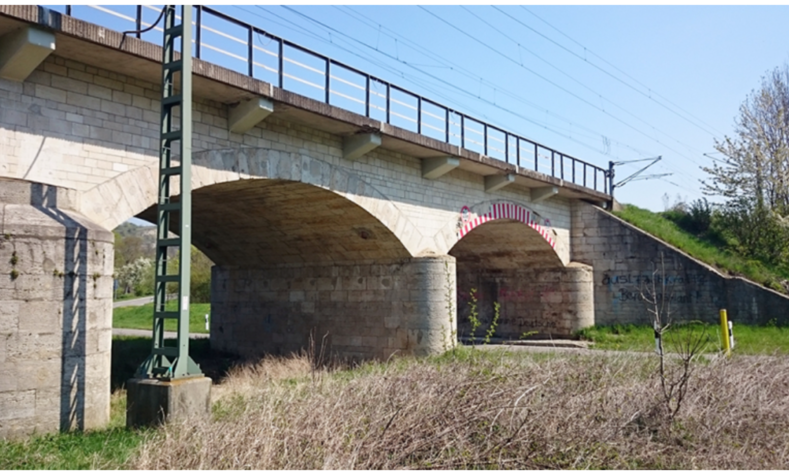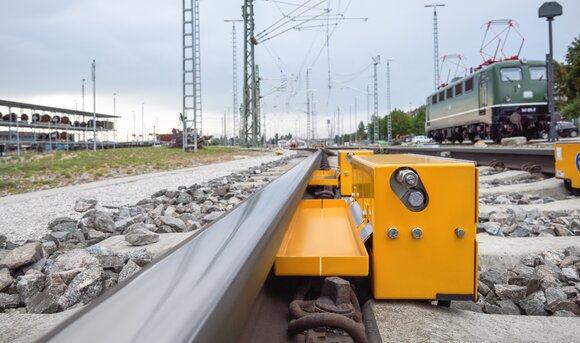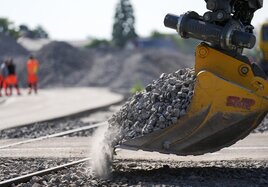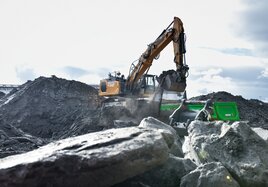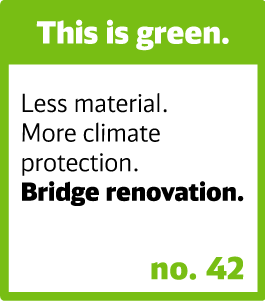
Deutsche Bahn has Europe's longest railroad line, with some 33,000 line kilometers. To make sure freight and passenger trains are able to travel safely and reliably to their destination on our network all while protecting the climate, our network needs regular maintenance and upgrading. But any time we build, we generate CO2e emissions. We want to continue to reduce our emissions and become even more climate-friendly.
One way we can make building greener is to renovate existing structures since renovating uses fewer raw materials and emits less CO2e than building new structures. We have looked at these eco-friendly savings in more detail using arch bridges as an example.
Thousands of arch bridges in the rail network
There are around 5,800 arch bridges in Deutsche Bahn's rail network. They not only ensure that our trains can easily cross rivers and other obstacles; with an average lifespan of around 120 years, they are also the dinosaurs of our infrastructure. Over time, these bridges often show signs of moisture penetration, cracking or washout. In the past, we tended to demolish smaller arch bridges in particular at the end of their service life and replace them with new concrete frame structures. So far, the only exceptions have been a few especially large and culturally significant arch bridges, such as the Elster Valley Bridge, whose renovation began in 2022.
However, DB InfraGO and the Technical University of Dresden have developed a method that shows that renovating and maintaining even smaller arch bridges can be worthwhile. The method involves installing a new bridge deck during the renovation instead of building a brand new concrete frame. The underlying structure is retained and renovated. This restores the bridge's load-bearing capacity and extends the bridge's service life by many years.
Preserving arch bridges – reducing CO2e and saving resources
The environmental advantages can't be argued with. Building a new single-arch bridge generates an average of around 130 metric tons of CO2e from the building materials used alone. By renovating, we can cut that down to only around 40 metric tons. What's more, if we count emissions from demolition, moving large volumes of soil, construction site facilities and rail replacement service during the construction phase, renovation can reduce CO2e emissions by some 100 metric tons compared to new construction.
But there are other advantages, too. Construction sites for renovation projects take up less space than new construction. Innovative materials, such as textile-reinforced and carbon concrete, will enable even more savings in the future.
Preserving building heritage
The first smaller single-arch arch bridges in DB's portfolio are already being renovated. This includes the Müggenborg railroad overpass on the line from Ihrhove to Groningen. In July 2024, the arch bridges were exposed, refurbished and fitted with a new deck. The substructures were also renovated at the same time.
By taking this approach, we are not only contributing to climate-friendly construction; we are also preserving part of our building heritage. Most of the arch bridges were built between 1850 and 1920.
